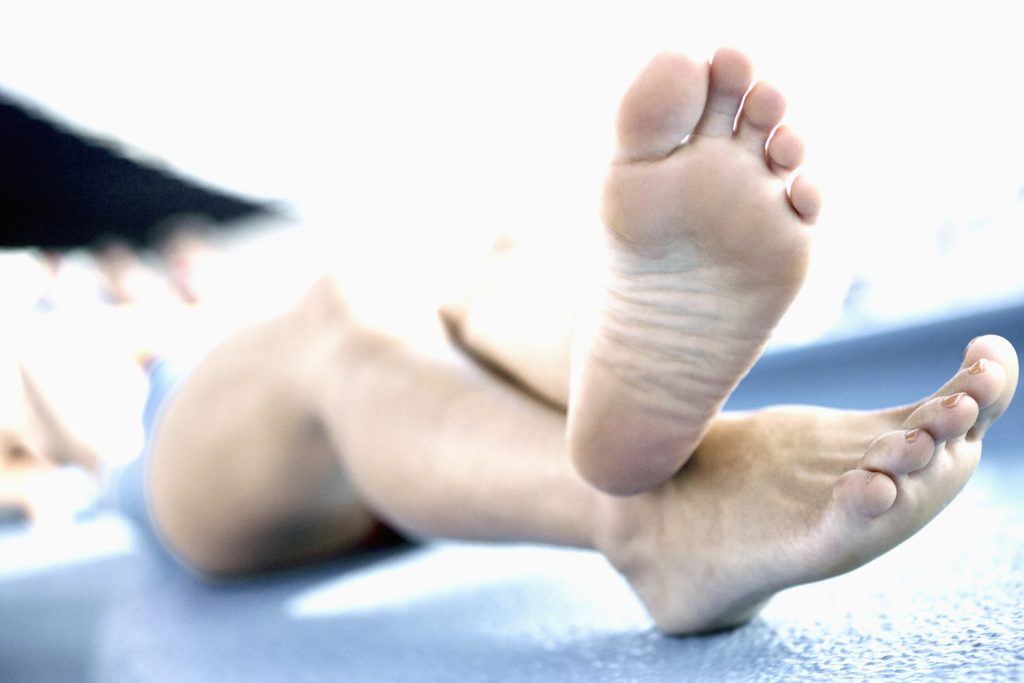Basketball players put great pressure on their feet and ankles, while playing the sport. Injuries that occur in the foot and ankle area can badly affect the bones, ligaments and tendons, which can make players leave the game for at least a week.
Research shows that over 200,000 basketball-related injuries happen every year, which mostly occur to people under the age of 15, requiring intensive treatment in hospital. Basketball is also tagged as the fourth leading cause of injuries in both unorganized and organized community.
Our foot doctor in Raleigh will discuss the 4 most common foot and ankle injuries in basketball and how they can be treated.
Plantar fasciitis
The plantar fascia is one of the most common injured areas of the foot, it is a thin and long line that connects your heel bone to your toes. This area of the foot can become inflamed due to repetitive activity, such as running. When the area is inflamed it can cause pain at the heel area of the foot.
Treatment:
- Take an ample amount of rest as advised by your doctor
- Place ice on the area to decrease inflammation
- Take anti-inflammatory medications
- Exercise
- Use of shoe inserts
- Cortisone injections
Prevention:
- Relax your lower legs whenever you do certain activities such as running, walking, standing, or sitting.
- When you jump try to land on the middle of your foot instead of the heel area.
Achilles tendonitis
The Achilles tendon is a thick fibrous tissue that connects the calf muscles to the heel. This area of the foot is used for walking, running and jumping, which are often carried out when playing basketball. Thus, making players more vulnerable to having this kind of foot injury.
Achilles tendonitis is caused by repetitive stress and pressure. When the area becomes inflamed it can result in several symptoms such as swelling, stiffness and pain. At times, when the Achilles tendon is under too much stress, it may also tear.
Treatment:
- RICE therapy – rest, ice, compression, and elevation.
- Take over-the-counter pain medications, but if the pain is severe ask your foot doctor for a prescription
- Ice and heat therapy
- Physical therapy
- Immobilization of the ankle
Prevention:
- Regularly warm-up and a cool down, especially during your basketball game
- Carry out proper strength training techniques for your legs, lower back and shoulders.
- Practice your balance.
- Wear shoes with good support
- Incorporate 1-2 days of rest per week
Ankle Sprains
An ankle sprain occurs when the foot forcefully twists, or rolls beyond its normal limits. A sprain in the ankle can partially, or fully damage the fibers and the ligaments of the ankle, which may result in pain, tenderness, instability, bruising and swelling.
Treatment:
- RICE therapy (rest, ice, compression, and elevation)
- Non-steroidal anti-inflammatory drugs (NSAIDs)
- Use crutches as needed
- Immobilization
- Physical therapy
Prevention:
- Warm-up before engaging in any physical activity
- Be mindful when walking, or running, especially on an uneven surface
- Wear the right fitting shoes for the game
- Take a break when you feel pain, or fatigue
Stress fractures
Stress fractures are small cracks in a bone, caused by repetitive activity and overuse. They mostly occur when an athlete suddenly shifts into high-intensity workouts. When muscles become tired the bones lose their ability to absorb all the shock, and pressure, and the stress is moved to the bone resulting in tiny cracks. Some symptoms include, growing pain during physical activities and diminishing during rest, swelling, tenderness and bruising.
Treatment:
- RICE therapy (rest, ice, compression, and elevation)
- Wearing a cast
Treatment:
- Be on a diet that is rich in calcium and vitamin D, which will help build bone strength
- Wearing protective footwear
- Start new routine exercises slowly
What should I do if I sustain a foot, or ankle injury from basketball?
Visit a foot doctor in Raleigh if you have experienced the following:
- You heard a “pop” sound at the time of injury.
- The pain in your ankle or foot was instant and the swelling did not subside within the first few days.
- You have continued instability in the ankle even when you are back to walking.
In the time following your injury, you may be unsure if what you feel is indeed a problem that needs the attention of a foot and ankle specialist or a podiatrist. Try to remember that some injuries are not immediately recognized – they can flare up even after several days. The sooner you see a foot doctor in Cary, the sooner your condition can be treated, reducing the potential for further damage.
At Raleigh Orthopaedic Clinic our foot and ankle doctors and staff are recognized as leaders and innovators in the field of orthopedics. Our foot and ankle surgeons regularly develop content designed to educate our patients with high-quality orthopedic knowledge sources.
Make an appointment with your foot doctor in Cary today to receive specialized treatment with a personal approach.
The material contained on this site is for informational purposes only and DOES NOT CONSTITUTE THE PROVIDING OF MEDICAL ADVICE, and is not intended to be a substitute for independent professional medical judgment, advice, diagnosis, or treatment. Always seek the advice of your physician or other qualified healthcare providers with any questions or concerns you may have regarding your health.

